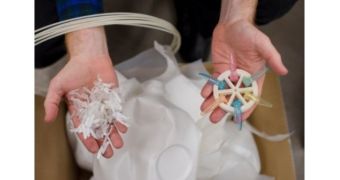Plastic waste is something that certain countries and, especially, landfills are practically swimming in. It's no wonder that recycling is such a big concern. If it was any other substance, nature would handle it, but plastic decomposes very, very slowly. Hundreds of years slowly.
This is a particularly visible concern on the 3D printing industry, where most things are made of plastic, or something similarly unlikely to decompose easily.
Sure, there are certain bioplastics that dissolve, especially those that are used in medical/surgery-intended 3D printed objects.
However, normal plastic filament is the most widespread substance from which items are 3D printed, at least when it comes to FDM printers.
FDM printing is the technique whereby a printer builds an object drop by drop. The plastic filament is superheated by an extruder nozzle, enough to be melted in drops small enough to make it all possible.
FDM is the most widespread of 3D printing technologies, at least among consumers, because the others are too expensive to sell to the common man.
This, unfortunately, means that there will be a big rise in the use of plastic in the future. And, by extension, that means a new source of plastic refuse, especially since, as a little known fact, 3D prints don't always come out right on the first try.
Joshua M. Pearce of Michigan Technological University have seen the problem, and they decided to provide a solution before it became serious.
Essentially, they have created a method through which plastic that has already been used can be turned into filament for 3D printing.
It will probably lead to a fairly murky-looking substance, but it's not like 3D printed figurines don't go through post-production painting anyway. No one's going to buy an all-blue mini bust of George Washington after all.
Not that there aren't plenty of very useful projects for which color purity doesn't matter. Just think of all the 3D printed prosthetics that have been coming out. An amputee isn't going to care if their new hand looks bland as long as it lets them grip things again.
The “turning recycled plastic into 3D printing filament” idea actually cropped up back in March, but we've got a video update to share with you all now. You can see it embedded below. According to the scientists, recycling old milk jugs (and, eventually, everything else made of plastic) takes 90% less energy than making new ones from petroleum.

 14 DAY TRIAL //
14 DAY TRIAL // 